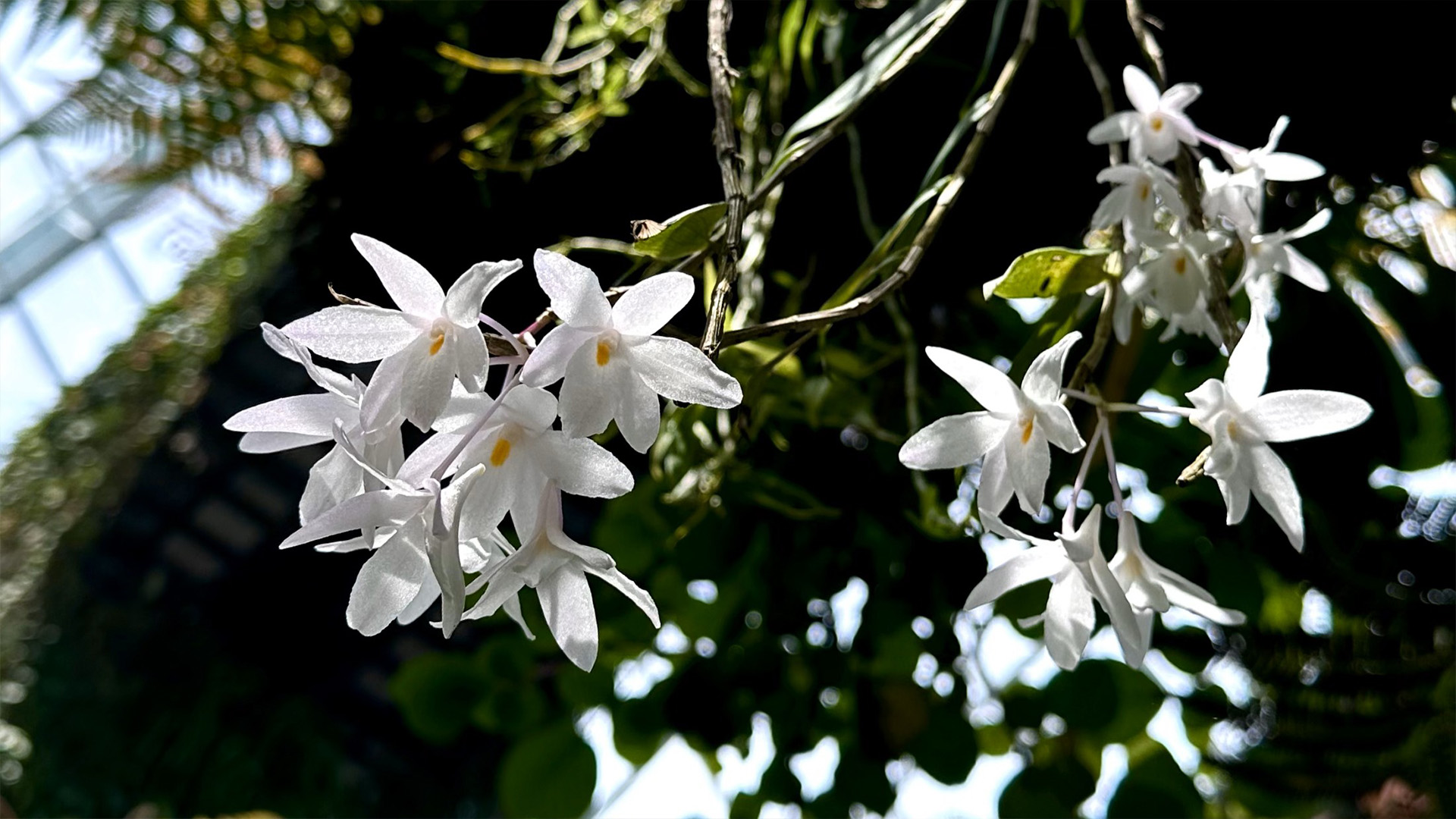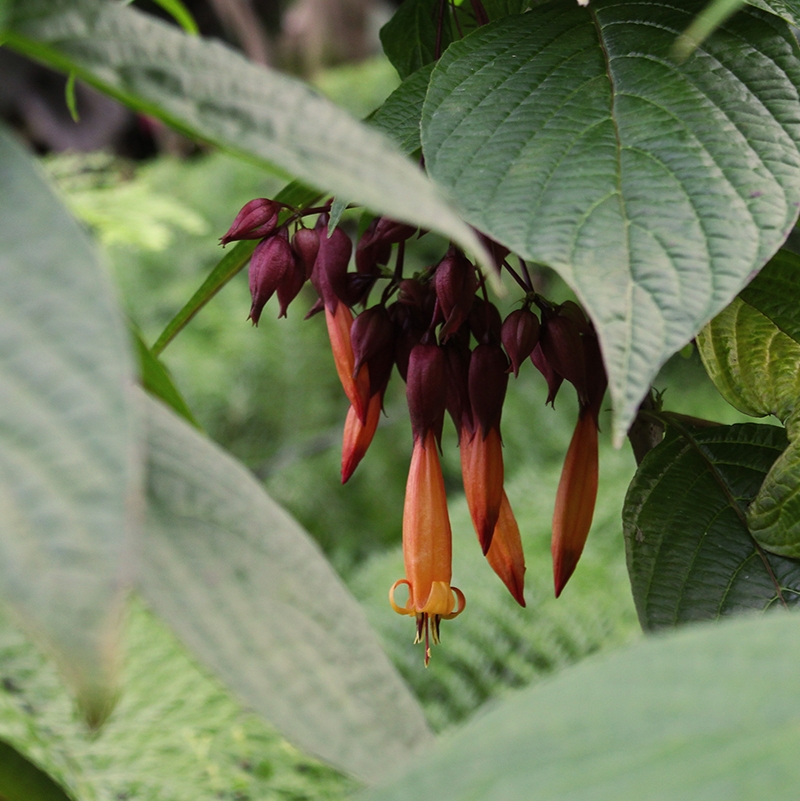Bridal Bouquet (Poranopsis paniculata)
 Trellis of bridal bouquet in bloom
Trellis of bridal bouquet in bloom
Commonly known as the bridal bouquet, Poranopsis paniculata is a large woody vine belonging to the morning glory (Convolvulaceae) family. This species is native to the south of Himalayas in Pakistan, India, Nepal, Bhutan, Tibet, China, Bangladesh and Myanmar, and can be found growing in forests, subtropical jungles, and open plains, at altitudes of sea level to 2000m. Widely grown as an ornamental plant throughout tropical regions worldwide, Poranopsis paniculata has been intentionally introduced and cultivated in the Caribbean Islands, Mesoamerica, Hawai`i, Reunion, Madagascar, Sierra Leone, Mauritius and Seychelles. Its first recorded cultivation was in the botanical garden of the British East India Company at Calcutta, dating back to 1799. It has also been naturalized in Hawaii since 1936, with specimens collected from the islands of Kaua'i, Oahu, and Hawai’i.
 Look at the cluster of flowers, doesn’t it resemble a bridal bouquet?
Look at the cluster of flowers, doesn’t it resemble a bridal bouquet?
Featuring velvety heart-shaped leaves with white hairs on their underside, it is cultivated for its flowers which are slender, tubular, and white, exuding a sweet fragrance as they bloom in dense clusters that resemble a bridal bouquet, inspiring its common name! This vine can grow up to 15m, often smothering any other plants or trees in its way. Other than its ornamental qualities, it is also used in traditional crafts like basket weaving!
 Closeup of the flowers.
Closeup of the flowers.
Due to its ability to grow excessively, the popularity of Poranopsis paniculata with horticulturists is limited. It is frequently found as a weed in lime (Citrus spp. and hybrids), avocado (Persea americana), and mango (Mangifera indica) groves in South Dade, Florida, although no specific details about its impact have been documented. Additionally, it is potentially considered a horticultural weed with a high-risk factor for invasiveness, in part due to its ability to produce viable seeds without the requirement of specialist pollinators and being able to grow vegetatively from cuttings or stem fragments. Come and have a look at this species flowering en masse in the World of Plants’ Fruits and Flowers Garden now!
Written by: Ng Yu Qin, Senior Horticulturist, Research and Horticulture
Yu Qin is always looking for ways to pick up new skills and put them to use. She spends most of her time with orchids and enjoys learning something new about them every day!



